Phil Giunta's Blog, page 50
September 22, 2017
New Event! Halloween Tales…
I will be joining writer pals John Evans, Christopher D. Ochs, and Dawn Sooy at the Whitehall Public Library in Whitehall, PA for an evening of scary readings, Q&A, and panel discussion on Monday, October 30 at 6PM. If you’re in the area and enjoy the “spirit” of the season, please join us… if you dare!

September 20, 2017
On Providing Useful Critiques…
As Neil Gaiman said: “When people tell you there’s something wrong with a story, they’re almost always right. When they tell what it is that’s wrong and how it can be fixed, they’re almost always wrong.”
Just a gentle reminder for all of us who critique stories. Remember to always begin with the positives before delving into the criticism, and refrain from dictating to the writer how you think they should write their story and how you think their characters should behave.
If that’s the story you want to read, write it yourself. Don’t tell the writer what to do. It’s the writer’s story and the ultimate decisions are up to the writer. Respectfully inform them of what problems you found in the story and offer suggestions. Leave it to the writer to do the work.
I’m reminded of an anecdote shared by actor Lance Henriksen in his autobiography, Not Bad for a Human. While working on Close Encounters of the Third Kind, Henriksen offered an idea to Spielberg that the government team at Devil’s Tower should kidnap one of the small aliens at the end of the film. Spielberg replied: “That’s a different movie, Lance.”
Click here for excellent guidelines on critiquing from The Writer’s Loft.
September 16, 2017
Afternoon at the Zoo
On more than one occasion this year, my wife and I had discussed visiting the Lehigh Valley Zoo since the arrival of Murphy the Giraffe. However, with the constant stream of disruptions that nearly consumed my summer, we could not make the time for it until this weekend—which also happens to be our anniversary.
I took comfort in the fact that summer has not yet left us, despite cooler weather moving in at the end of August. Today, we hit 81F degrees and I loved every perspiration-inducing minute of it. Of course, this meant that several of the animals decided to find a shady corner of their residences and curl up for a nap, but we were not disappointed by those that were active including:
African Penguins
African Spurred Tortoise
Alpacas
Auodads
Axolotl (in the reptile and amphibian house)
Black and White Swans
Blue Heron (a recurring visitor to the zoo)
Chuckwalla
Gila Monster
Camels
Zebras
Murphy the Giraffe (the zoo’s newest attraction)
Ostriches and Emus
Scimitar-Horned Oryx
Mexican Gray Wolf
Cocatoos, Lories, and Lorikeets in the bird habitat
Laughing Kookaburra
… and more!













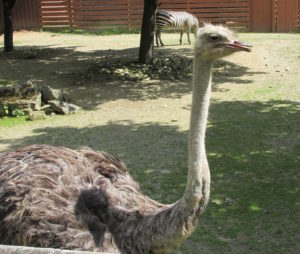















September 15, 2017
Book Review: Galloway’s Gamble by Howard Weinstein
Told as a memoir written by one of the protagonists, Galloway’s Gamble is a story about hope, risk, and the indomitable human spirit. After gunning down her abusive alcoholic husband in 1850’s Texas, Cara Galloway becomes determined to create a new and better life for herself and her sons, Jake and Jamey. What follows is a rollicking, colorful, fast-paced adventure spanning nearly 30 years of the Galloway family. Weinstein takes readers on a delightful and honest journey of love, war, gambling, prejudice, greed, ruin, and triumph through a well-researched backdrop of the Old West. I enjoyed every word of this satisfying tale filled with a motley and endearing cast of wonderful characters. I reckon you will, too.
This latest release from NYT bestselling author Howard Weinstein can be found on Amazon.
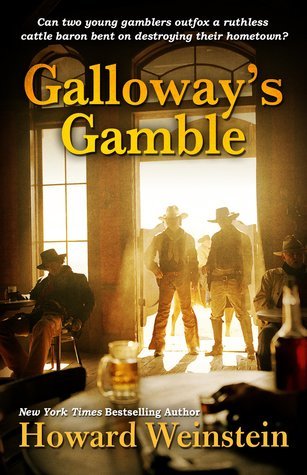
September 12, 2017
Getting Back on Track
Going into 2017, I promised myself not to write any more short stories this year so I could focus on the first draft of the SF novel I started writing last year. Four chapters into the first draft by April 2016 and the novel ended up on the back burner for a home renovation, a Kickstarter to fund a new anthology, the release of said anthology, and writing six new short stories for contests and anthologies.
As productive as that was and as proud as I am of those stories, the SF novel languished. Then came 2017 and I set my sights on finishing the first draft by December. Four more chapters were written between January and May… and the novel was again sidelined while I edited submissions to a new anthology, finished a month-long home renovation, then watched my summer collapse along with the roof at my workplace as a result of a severe storm. I want my summer back, damn it!
So, to get my writing chops back in shape, I cranked out the aforementioned short story about the haunted car—just so I could feel good about finishing something this year. I thought I would then return to the SF novel…
Instead, I’ve spent the past week crafting the plot synopsis for my next full-length Miranda Lorensen novel. Almost there. I spent more time working on it in my sunroom this evening—and peeking up every so often to watch a tiny bunny roam around my neighbor’s shed. Who can resist bunnies?

If all goes as planned, this novel will tie directly to the novella that my publisher accepted back in June. The novella, Like Mother, Like Daughters, addresses some aspects of Miranda’s life mentioned in my novels Testing the Prisoner and By Your Side .
I jotted down a quick jacket blurb for the novella recently. It needs work, but…
Psychic-medium Miranda Lorensen and her daughter Andrea set out for a “girls night of ghost hunting” at the home of Andrea’s closest friend, Wendy. When Andrea Lorensen stumbles over Wendy’s dead body in the woods, the shock triggers Andrea’s own latent abilities as a medium. Against her mother’s wishes, Andrea decides to ensnare Wendy’s killer with help from the other side.
Meanwhile, Miranda travels to Salem, Massachusetts to speak at a paranormal investigators conference. When she is invited to participate in a local ghost hunt, Miranda encounters a spirit that leads her to the truth about her past life.
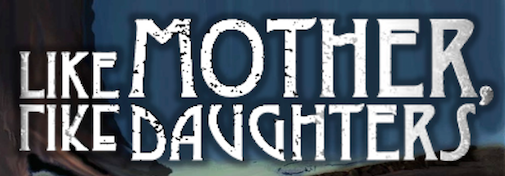
Now, hopefully, the novella will be released next year with the novel to follow a year or so later. My concern is that as of 2018, it will have been FIVE years since my last novel. Yikes!
During that time, I’ve been focused on short stories and editing anthologies, which has proved fruitful. My publisher and I have released two volumes of the Middle of Eternity speculative fiction series, my work has placed high in a few local contests, and I’ve been published in a handful of other wonderful collections such as the ReDeus mythology series and Beach Nights . I firmly believe that short stories and novellas are nutritious parts of a well-balanced writing career.
As much fun as those projects have been, a few solo publications are definitely needed within the next year. While Miranda has earned a modest fan following–and several readers have contacted me to ask when to expect her next adventure–people have short memories these days so I hope all of this works out as planned!
September 11, 2017
Book Review: Worthy of Prometheus by Plum McCauley
Considered the least among his fellow immortals on Mt. Olympus for being “ugly” and physically deformed, master craftsman Hephaestus embarks on a new invention for the benefit of humankind. Although Hephaestus is well aware that his efforts might once again earn him the wrath of Zeus, his fear is outweighed by a desire to expedite the advancement of mankind.
Meanwhile, his perfidious wife, Aphrodite—normally oblivious to the endeavors of her hideous husband—becomes uncharacteristically curious and with a bit of help from fellow immortals Apollo and Artemis, goes “undercover” to find out precisely what Hephaestus is up to…
At only 91 pages, Worthy of Prometheus, is a quick, fun novella that takes liberties with certain aspects of Greek mythology. The story begins slowly, but McCauley’s characterization of the tumultuous relationship between Hephaestus and Aphrodite is entertaining, as is the goddess’s bumbling attempt to spy on her husband.
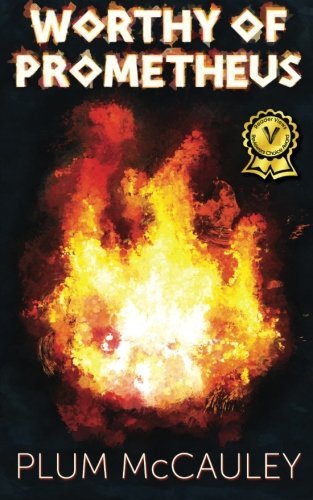
September 9, 2017
About This Writing Stuff…
This week, Maggie Doonan counsels us on when to throw in the towel on a writing project while Julia Munroe Martin opens up about why she abandoned one of hers.
Anne R. Allen warns new writers against mistakes that could leave them prey to publishing scams. James Scott Bell offers two methods to jumpstart your writing session. Over at MythCreants, Chris Winkle advises us on ways to better give and receive criticism.
Writer pal Kathryn Craft shares her experiences with exploring and pitching new ideas after her first two novels were published. David Gaughran provides tips on how to maximize the benefits of Kindle Unlimited. From Writer Unboxed, Steven James waxes eloquent about the “agathokakological” nature of humanity.
All that and a little more… Enjoy!
4 Signs It’s Time to Quit a Writing Project by Maggie Doonan
7 New Writer Mistakes that Make You Vulnerable to Predators by Anne R. Allen
What Happens When You Run Out of Novels? by Kathryn Craft via Sandra Hutchison
The Visibility Gambit by David Gaughran
Two Writing Mind Tricks to Get You Rolling and Weaving Backstory into Frontstory by James Scott Bell
Telling the Truth in Fiction by Steven James
Seven Things I Learned from Wrecking my Novel by Julia Munroe Martin
A Storyteller’s Guide to Criticism by Chris Winkle
Memoir or Fiction? Should You Novelize Your Real Life Experiences? by Anne R. Allen
September 1, 2017
Book Review: Not Bad for a Human by Lance Henriksen with Joseph Maddrey
“One thing I know for sure: God didn’t bring me this far to drop me on my ass.”
Lance Henriksen is well known to SF and horror fans for such films and TV shows as Aliens, The Right Stuff, Millennium, Pumpkinhead, Aliens vs. Predator, and much more.
In his autobiography, Henriksen depicts a childhood fraught with poverty and insecurity with a mother who survived a succession of failed, and sometimes violent, marriages. His brief service in the U.S. Navy was no less problematic and ended in his arrest and discharge after going AWOL.
Wandering across the country and through Europe with a strong passion for art, Henriksen finally found his calling in acting—despite illiteracy. He eventually used scripts to teach himself to read. Over time, he moved from stage to film and, reluctantly, to television, becoming close friends with directors and actors such as James Cameron, Bill Paxton, Ed Harris, and others.
Most of the narrative focuses on Henriksen’s method of embodying the characters he portrays and often breathing life into them by going off script and improvising lines that he feels would be more natural than what had been written. On many occasions, his directors were receptive, other times less so. Many pages are dedicated to his experiences making Aliens, The Right Stuff, and Pumpkinhead while an entire chapter is devoted to the arc of Frank Black, his leading character from the Chris Carter series, Millennium.
Frequent mention is made of Henriksen’s enjoyment of pottery as an art form. When filming on location domestically or overseas, he frequently sought out potters who were creating the most original work. At one point, Henriksen himself had created so many pieces that his wife prompted him to open an online shop.
Though he admits to making a string of low-budget films simply to pay the bills, Henriksen tried to find something redeeming in nearly every character he portrayed and to this day, the septuagenarian still enjoys learning and growing as an actor and exploring new concepts.
It should be noted that I acquired my signed hardcopy edition of Not Bad for a Human directly from Mr. Henriksen at Monster Mania convention in August 2011. In fact, we swapped books. I gave him a copy of my first novel, Testing the Prisoner, and we chatted briefly about independent publishing.
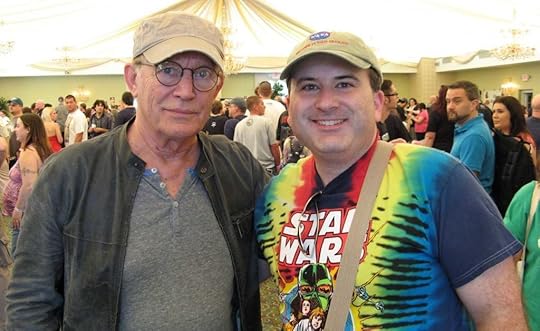
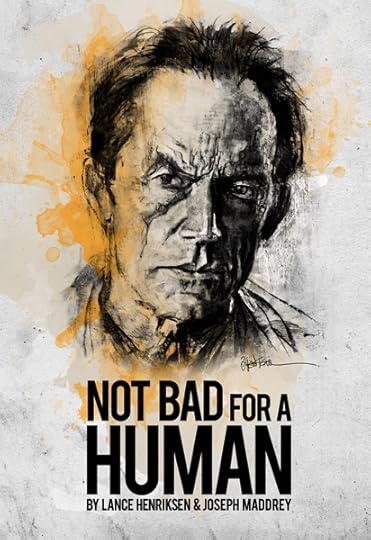
August 28, 2017
Book Review: The Rest of the Robots by Isaac Asimov
After releasing I, Robot, Isaac Asimov produced an anthology of eight stories dealing with his Three Laws of Robotics. Some of these are standalone tales published in various magazines in the 1940s, while others were written later and include some characters from I, Robot, such as Dr. Susan Calvin.
Of the eight, my favorites include:
“Robot AL-76 Goes Astray” – A confused robot, intended for work on the moon, wanders through the woods until it encounters Randolph Payne working at his shack. Although fearful at first, Randolph quickly surmises that the robot’s manufacturer would pay a handsome reward for its return since robots were not yet permitted for use on Earth. Payne convinces AL-76 that his work assignment has changed and keeps him occupied at the shack—until he realizes the robot’s true purpose…
“Victory Unintentional” – Three robots are sent to the surface of Jupiter as emissaries from the human colony on Ganymede. The inhabitants of Jupiter have continually threatened to exterminate the “vermin infesting Ganymede” as soon as they finish development on a forcefield that will allow them to leave the planet and invade the largest of the Jovian moons. However, a hilarious case of mistaken identity leads them to a change in plan…
“Let’s Get Together” – In a dystopian future where the world is divided between two superpowers, the United States government learns that the “other side” has advanced further in robotics than anticipated—to the point of creating robots in the form of humans. Further, it is revealed that certain American scientists who spent time on the “other side” might have been replaced by automatons and if brought together in the same place at the same time, would detonate a devastating bomb…
“Risk” – Orbiting an asteroid known as HyperBase, a test ship called Parsec fails to launch into hyperspace as planned. There is no way to determine if a component of the ship or its robot pilot is at fault without sending a human to investigate. However, the Parsec is unstable and could launch into hyperspace at any moment. Since every animal used in hyperspace experiments either died or returned as a mindless vegetables, Dr. Gerald Black is none too thrilled about being ordered to undertake the mission…
“Galley Slave” – In an effort to assimilate robots into society and eliminate prejudice against them, U.S. Robots and Mechanical Men, Incorporated chooses Northeastern University for an experiment. A robot named EZ-27 (aka “Easy”) is brought in to provide proofreading services for academic papers and textbooks written by the faculty. However, when one professor’s galley is drastically altered, ruining his reputation after it’s publication, he files a lawsuit against the company. But what happens when Easy is allowed to speak in court?
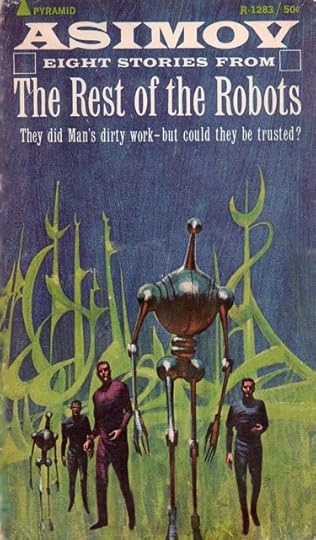
August 26, 2017
“The Celestials” – A Rehoboth Beach Story
Ah, the highs and lows of the writing life. As mentioned in a previous post, my submission to the 2017 Rehoboth Beach, DE short story contest was not selected by the judges. That was disappointing since my 2016 story, “Tower 16,” took second place.
So I thought I’d post the new story on my blog for your free reading pleasure. Feedback welcome, of course.
In “The Celestials,” the death of a reclusive writer attracts some interesting characters… Click here to read!




